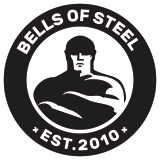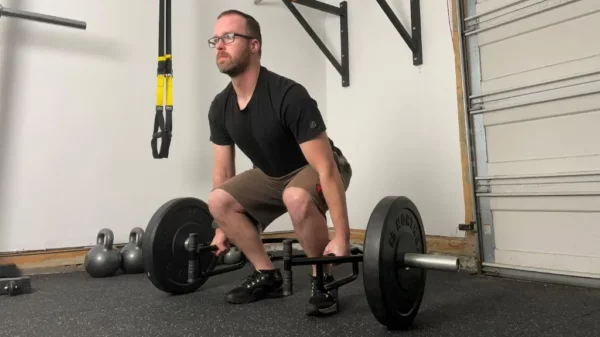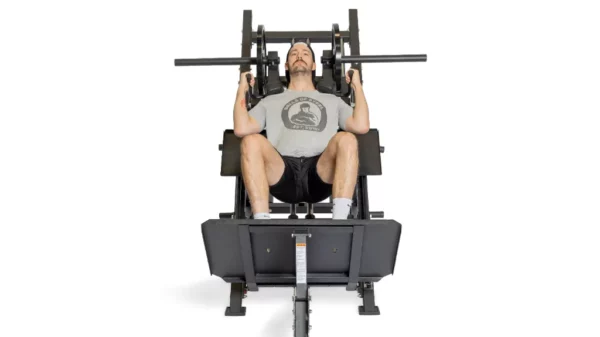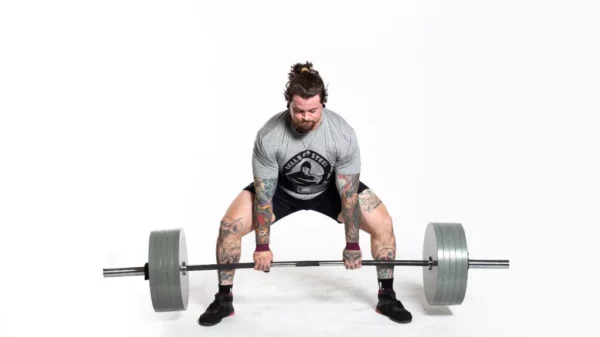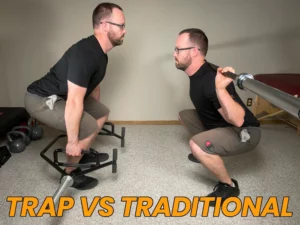Few things in the gym are as satisfying as picking heavy weights up off the floor. Aside from being a deeply satisfying feeling, deadlifts are also a highly functional exercise. As such, training this movement pattern can help reduce aches and pains experienced with daily activities while making you a stronger, more physically capable human in everyday life.
These are only a few of the multiple benefits of performing deadlifts as part of your training routine. So, if you’re not incorporating deadlifts into your strength training routine, it may be a good idea to start doing so. But with the multiple deadlift variations that exist, many lifters often wonder what the differences are between each variation and which one might be most beneficial for their needs.
The two most common deadlifts are the Conventional Deadlift and the Romanian Deadlift. They share many similarities and many differences. By the end of this article, you will have a basic understanding of:
- The main similarities and differences between these two common deadlifts.
- The pros and cons of each deadlift.
- How to perform both of these deadlifts.
- How to determine which deadlift may be best for your individual needs.

The conventional deadlift is a fundamental movement pattern and exercise to learn. It replicates everyday physical demands and will make you stronger inside and outside of the gym.
As you read through this article, keep in mind that the deadlift is a highly beneficial exercise, but one that requires technical precision (and mastering the mechanics of either of these lifts doesn’t happen overnight).
As such, your goal should always be to master and maintain ideal technique at all times. Don’t get sloppy with your deadlifts or sacrifice your form for weight. Practice these deadlifts with lightweight and progress things from there.
Main Similarities Of Each Deadlift:
Regardless of which type of deadlift you’re performing, plenty of similarities occur during each movement. Knowing these similarities can help reduce the confusion that newer or inexperienced lifters often experience.
To be clear: both are absolutely outstanding exercises, so you’ll get stronger with either variation you perform. Still, being well-versed in their similarities will serve you well as you pursue your lifting endeavours.
The most notable similarities between the Conventional and Romanian deadlift include:
- Training multiple muscle groups along the entire backside of the body (collectively known as the posterior chain) through a vertical pulling motion.
- Raising the weight directly upwards to a fully upright position while keeping the bar (or dumbbells) directly underneath the center of gravity (i.e. keeping the weight close to your body).
- The ability to perform either lift with different types of bars (standard barbell, open trap bar, etc.).
- The ability to perform either lift with various types of grips (double overhand, mixed grip, or hook grip).
Main Differences Between Each Deadlift:
As with knowing the similarities between each deadlift, knowing their differences will also help serve you well for all your lifting days ahead. This knowledge will also help you to better understand when and why you might want to opt for one particular deadlift over the other. (But keep in mind that later in this article, I’ll go over some highly valuable information to help you have supreme confidence in knowing which will be best for your needs and abilities).
The most notable mechanical differences between the Conventional and Romanian deadlift include:
- The Conventional deadlift has a greater degree of knee movement, whereas the Romanian deadlift is a relatively hip-dominant movement.
- The Romanian deadlift places a higher amount of torque (resulting in greater muscular effort) on the lower back muscles (known as the erector spinae muscles) due to the strict hip-hinging movement required. (However, it’s worth noting that the Conventional deadlift still places a high degree of muscle recruitment onto the lower back muscles as well, but with less actual torque.)
- The Romanian deadlift often results in a shorter range of motion that the barbell travels through due to the limited muscle lengthening on the backside of the body (particularly with the hamstring muscles). Few lifters are able to set the barbell plates on the floor with each repetition while maintaining strict form (i.e. without rounding their lower back).
Pros and Cons Of Each Deadlift
It’s critical to understand that neither type of deadlift is “right” or “wrong” each one can have unique strengths and drawbacks, which are simply influenced by your individual abilities or training goals (more on how to pick the best one for you later in this article). For many lifters, performing both of these common variations within their overall training regimen can be highly beneficial, so don’t think you can only perform one or the other.
Pros of the Conventional Deadlift
- It’s a foundational and functional movement pattern for everyday life.
- Technical mastery of this lift will allow you to progress to additional exercises, including the Olympic lifts, picking up heavy weights for farmer’s carries, etc.
- It allows for lifting heavier loads than the Romanian deadlift.
Pros of the Romanian Deadlift
- It places a greater emphasis on hamstring and lower back strengthening.
- It elongates the hamstring muscles, which can improve functional mobility, eliminate hamstring tightness, etc.
- It can easily be performed with dumbbells or kettlebells in addition to a barbell.
- It can be performed as a single-leg variation (the single-leg Romanian deadlift)
Cons of the Conventional Deadlift
- The movement is difficult/inefficient to perform with dumbbells.
- It can’t be performed as a single-leg movement.
Cons of the Romanian Deadlift
- It can be much easier to strain or injure the lower back if the technique is not sound.
- Typically requires a lighter load than the conventional deadlift.
- It may be uncomfortable/inappropriate if you have excessively tight hamstrings or a recent hamstring injury.
How To Perform Each Deadlift
While the concept of both deadlifts is essentially the same (raise the barbell upwards while keeping it close to your body), the execution of each is surprisingly different. Think of it like rugby vs. football; both require you to get a ball to an end zone without being tackled along the way, but the execution for how this happens is quite different. In other words: they’re the same but different.
If you’re brand new to the world of deadlifting, my personal recommendation is to learn and master the conventional deadlift first; this movement pattern will translate to numerous other gym-based exercises. It’s also slightly less technical to execute, which can help ensure safety when just starting out.
How to Perform the Conventional Deadlift

The conventional deadlift can be performed with a standard barbell, or with a trap bar, such as the Bells of Steel Open Trap Bar.
- Start by standing with your feet shoulder-width apart and placing them underneath the barbell. When you look downwards, your last row of shoelaces should be obscured by the barbell.
- Reach down to grab the barbell by bending your knees and hips. Your shins should naturally be slightly touching the barbell or within half an inch of contact.
- Before you lift the weight, make sure that your entire back is in a flattened (straight) position. This is the safest and strongest position it can be in for the deadlift. Your chest should be facing in front of you and not pointed at the floor.
- Begin to stand up and ensure that you raise your hips and shoulders at the same rate (your chest should continue to face forwards, and your back should remain flat at all times).
- Keep the bar lightly in contact with your shins and thighs as you raise the weight upwards. Breathe out during this upwards process.
- Once you’re standing upright, slowly “rewind” the movement you just performed, keeping the bar in close contact with your thighs and shins. Your hips and shoulders should move toward the ground at the same rate.
- Set the bar on the ground, take a second to get set back into the starting position and repeat.
How to Perform the Romanian Deadlift

The Romanian deadlift places a unique emphasis on the hamstring and lower back muscles and can add valuable training variety into your regimen.
- Just as with the conventional deadlift, start by standing with your feet shoulder-width apart and placing them underneath the barbell. The last row of your row of shoelaces should be covered by the barbell when you look down.
- Pick the weight off the floor the exact same way you did with the conventional deadlift. The following repetitions will be slightly different, but when lifting off the floor on the first rep, use the conventional technique (it’s safest for your back).
- From the upright position, push your butt directly behind you while maintaining a very small bend in your knees (don’t lock your knees out at any point throughout the lift). Lower your chest to the floor by hinging at your hips (do not let your spine bend at all).
- Keep the bar in contact with your thighs while keeping your back straight (your spine should not move at all).
- Slowly hinge forward through your hips until you feel a mild-to-moderate stretch in your hamstrings. It’s unlikely that you’ll have the mobility for the plates to make contact with the ground.
- Return to the upright position by squeezing your butt while keeping the bar in contact with your thighs.
- Once you have done all of your repetitions, set the weight back down using the conventional deadlift technique to ensure you keep your back safe.
Which Deadlift Best Suits Your Needs
As mentioned earlier, both the Conventional and Romanian deadlifts are outstanding exercises to perform; however, there are plenty of times when one will likely be more beneficial or ideal for you based on your abilities or training needs.
What follows are some general considerations for which of the two lifts might be best for you if you could only pick one single version to perform. It’s perfectly acceptable to have both variations programmed into your training block, but if you could only pick one to start with, what follows is some insight to help with your decision for which one to pick.

The Romanian deadlift can be performed as a single-leg variation and can be done so with a barbell, dumbbell, or kettlebell.
When to Opt for the Conventional Deadlift
If you’re brand new to deadlifting or working out in general, opt for performing the conventional deadlift over its Romanian counterpart. The foundation of safe, effective, and lifelong training is built upon perfect conventional deadlift technique.
Here are other common scenarios where it’s likely a better idea to do conventional deadlifts:
- If you don’t have a high level of muscular conditioning (i.e., your muscles aren’t used to resistance training). There’s less likelihood of experiencing excessive lower back soreness when compared to the Romanian variation.
- If your goals are to build high levels of muscular strength, the conventional will likely get the job done better than the Romanian version.
- If you want to target as much of the musculature on the backside of the body in as few exercises as possible, opt for the conventional deadlift.
When to Opt for the Romanian Deadlift
If you’ve got your conventional deadlift technique on lockdown, you’ll likely have next to no difficulty learning the Romanian deadlift. While the can be plenty of scenarios in which it may be more optimal to perform the Romanian deadlift, some of the most common scenarios include:
- If you’re looking to place some additional strengthening emphasis on training your hamstrings or lower back muscles.
- If you want to improve the mobility (range of motion) of your hamstrings.
- If you don’t have access to a barbell but have dumbbells or kettlebells.
- If you’re in need of some training variety after an extended period of time performing the conventional deadlift.
Romanian Deadlift vs Conventional Deadlift - Final Thoughts
You can’t go wrong with the Conventional or Romanian deadlift. Both are immensely functional and beneficial exercises to perform for those looking to improve their strength, longevity, and overall physical robustness.
Whether you opt to perform one or both, make sure your technique is on point and then watch all the good things that happen to your body throughout your pursuit of lifting!
